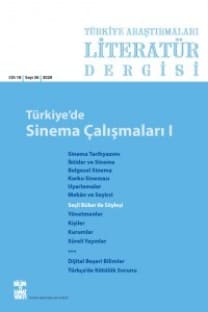Bir Osmanlı Balkan Tarihçisi Machiel Kiel
Balkan Yarımadası'ndaki Osmanlı kültürel mirasının tarihi, bölgenin medeniyet tarihi içerisinde en az bilinen konulardan birisidir. Balkan coğrafyası yaklaşık beş yüzyıl İslam dünyasının doğal bir parçası ve Balkan şehirleri de Osmanlı İmparatorluğu'nun en önemli şehirleri olduğu halde, özellikle politik sebepler yüzünden, son dönemlere kadar bölgenin Osmanlı mirası tamamen bir yok saymaya maruz kalmıştır. Osmanlı idaresinin Balkan Yarımadası'ndaki varlığı sona erdikten sonra birçok Osmanlı eseri yok edilmiş ve bu durum özellikle XX. yüzyılda şiddetini artırarak devam etmiştir. Kiel'in deyişiyle ?Hâlâ bazı Balkan ülkelerinde bir camiyi yerle bir etmek onu restore etmekten daha kolaydır?. Bu durumun bilincinde olarak Kiel 1959'dan beri Balkanlar'ı dolaşmış ve hayatını bölgedeki Osmanlı eserleri hakkında bilgi toplamaya adamıştır. Bu aynı zamanda ona bir eseri uluslararası arenada tanıtma imkanı vermiş ve bundan, eserin korunma ve restore edilme süreci de olumlu bir şekilde etkilenmiştir. Kiel'in bu büyük çabaları sayesinde bizler, bazıları yok edilmiş olsa bile ciddi miktardaki Osmanlı eseri hakkında bilgi edinme imkanına sahibiz.
Anahtar Kelimeler:
Osmanlı Balkanları, Osmanlı Mimarîsi, Mimarî Eser, Osmanlı Şehri.
Machiel Kiel as an Ottoman Balkan Historian
The history of Ottoman cultural heritage in the Balkan peninsula is one of the least known issues in the civilization history of the area. Until last decades, mainly because of political reasons, there was a full ignorance about the Ottoman herigate of the region unless for a half milennium this region was an integral part of the Muslim world and the Balkan cities were among the most important cities of the Ottoman empire. After the end of the Ottoman authority in the Balkan peninsula, most of the Ottoman buildings were destroyed and this was harshly dealt with especially during the XX. century. As Kiel points out ?in some Balkan countries it is still easier to blow a mosque up than to restore it.? Being aware of this situation, Kiel travelled along the Balkans every year since 1959 and spent his life to collect information about the Ottoman buildings in the area. This also enabled him to make a building internationally public so that its process of saving and restoring has been affected positively. Thanks to his great efforts, we have opportunity to have information about a considerable amount of Ottoman monuments, some were even destroyed.
- ISSN: 1303-9369
- Başlangıç: 2003
- Yayıncı: Bilim ve Sanat Vakfı
Sayıdaki Diğer Makaleler
Osmanlı'da Kent İskânı ve Demografisi (XV.-XVIII. Yüzyıllar)
Osmanlı Şehir Tarihinin Görsel Kaynakları
Kathryn A. EBEL, . N. Bilge ÖZEL
Osman Nuri Ergin: Cumhuriyet Döneminin İlk Şehir Tarihçisi
Şehir Tarihi ve Türkiye'de Şehir Tarihçiliği: Yaklaşımlar, Konular ve Kaynaklar
Suraiya Faroqhi ile Türk Şehir Tarihi Üzerine
Türk-İslam-Osmanlı Şehirciliği ve Halil İnalcık'ın Çalışmaları
Osmanlı Klasik Döneminde Anadolu Kentleri
André Raymond: Arap Şehir Tarihinde Bir Dönüm Noktası
